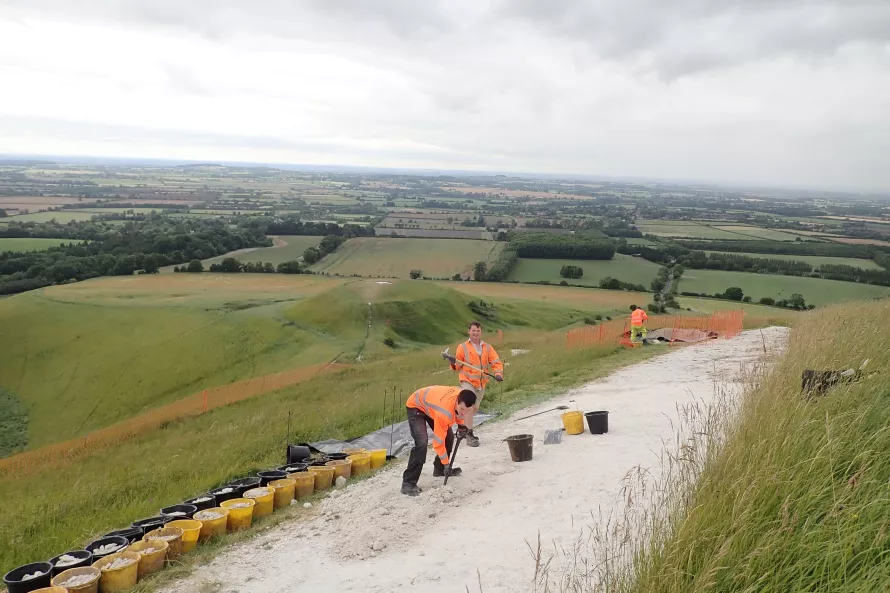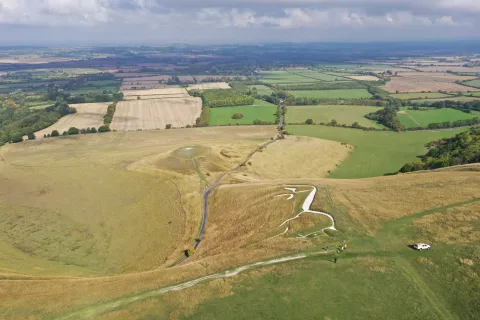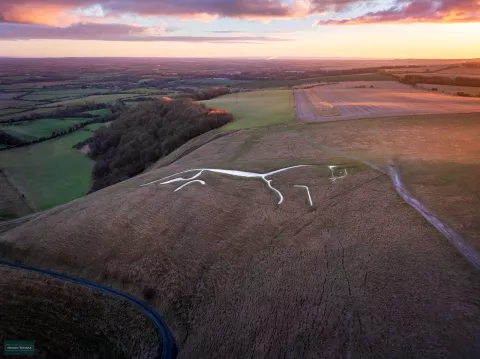Bill Bryson, the astute and amusing American commentator on things British wrote:
"Consider the White Horse of Uffington...it seems to me what is truly remarkable about the White Horse is, that continuously for around twenty centuries others have made the effort to maintain it. The White Horse has been preserved simply because people like it. I think that’s splendid."
The White Horse is a fragile creature. Gravity, and weather, worms, grazing animals and vegetation all work together to cover the figure with silt and encroaching turf. If left alone the White Horse would probably disappear in about a decade. We now know that the figure was made by cutting a trench into the ground. So if it was buried archaeologists could, in theory, resurrect it. But we have only had these excavation skills for about a century.
We know that since the 18th century people came together, every few years (but not with great regularity) to clean and scour the Horse, and hold the ‘Saxon Olympicks’. When, how and why earlier scouring happened is less certain.
In the early Bronze Age human beings across Europe and Asia were obsessed with horses and the sky. Horses transformed society, generating warrior elites. In mythology horses drew the sun across the sky in daytime, and returned at dawn. In this context the Horse was carved on the hillside, marking what had been a sacred landscape for centuries.
Yet in the following centuries new people arrived, religions and languages changed. Settlements were abandoned and shifted around the landscape. New elites speaking Celtic, Latin, Early English and Norman French arrived, and took control of the estates. Generations of peasants continued to farm the land, aware of the investment made by their ancestors. It is remarkable that they did not neglect the Horse figure, prominent on the hillside.



